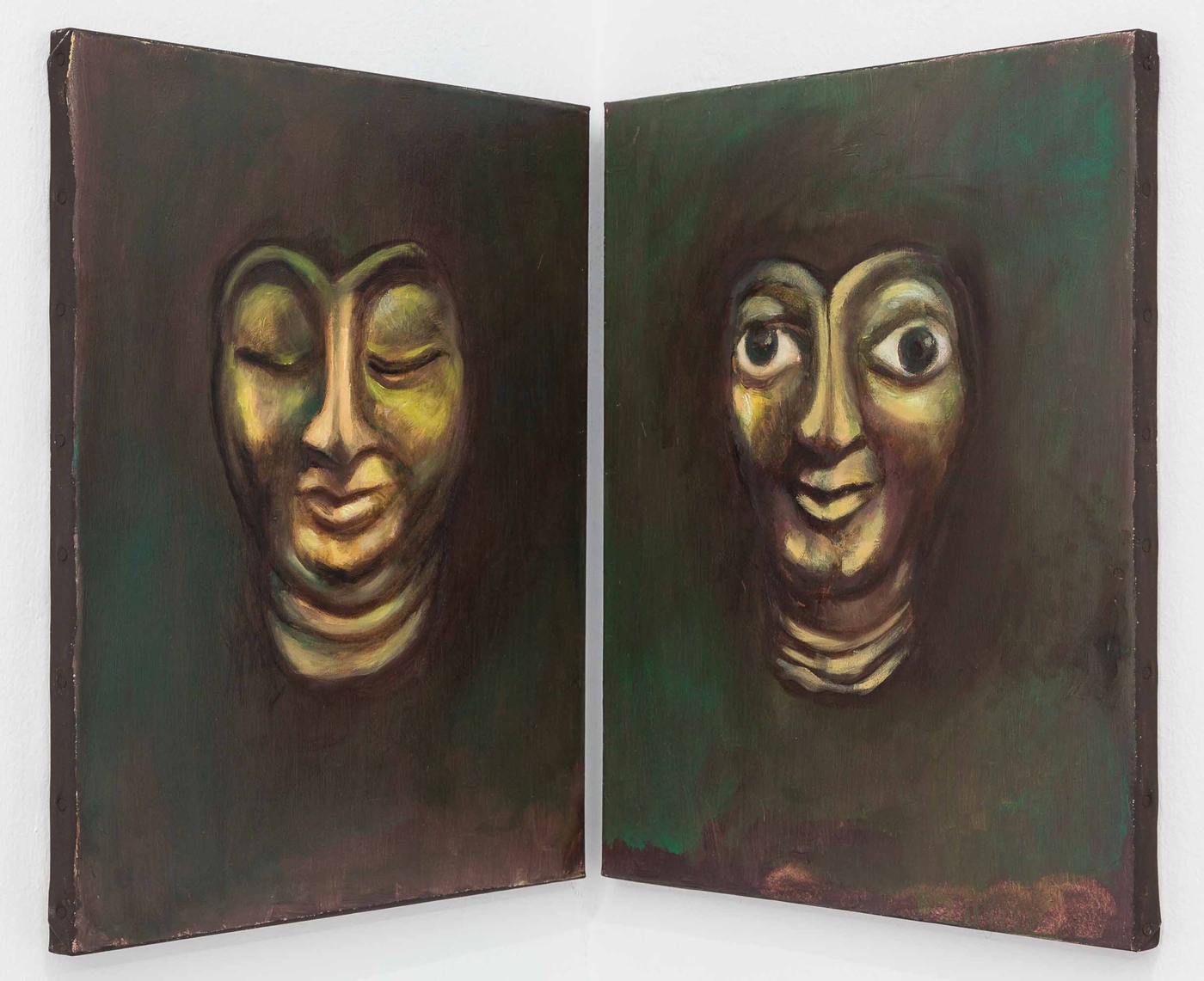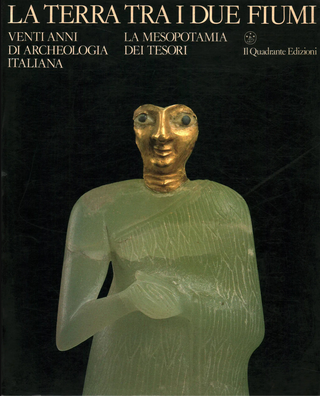This painting, conceived as a visual duet, draws inspiration from the legendary golden mask attributed to Ishtar, goddess of love and war in ancient Babylon.
In the first image, Ishtar smiles: her face reflects pride and satisfaction at the prosperity, sophistication, and cultural grandeur that once characterized her vast empire.
In the second, however, her eyes are closed. After contemplating the current state of the land torn apart by war, destruction, and neglect-she has chosen not to see, as if in a gesture of mute grief and rejection of the havoc of the present.

This painting, conceived as a visual duet, draws inspiration from the legendary golden mask attributed to Ishtar, goddess of love and war in ancient Babylon.
In the first image, Ishtar smiles: her face reflects pride and satisfaction at the prosperity, sophistication, and cultural grandeur that once characterized her vast empire.
In the second, however, her eyes are closed. After contemplating the current state of the land torn apart by war, destruction, and neglect-she has chosen not to see, as if in a gesture of mute grief and rejection of the havoc of the present.

The cover of the catalog "The Land between the Two Rivers, twenty years of Italian archaeology. The Mesopotamia of treasures".
Il Quadrante Edizioni, Turin 1985
The artist was inspired by the mask of Ishtar, the goddess of love and sexuality and, therefore, fertility; she is responsible for all life, but she is never a mother goddess. As a goddess of war, she is often shown winged and armed.

Ishtar's mask was digitally modified to paint the Ishtar diptych, in 2016.
From eyes open in amazement at the beauty of ancient times, to eyes closed as if not wanting to see the disasters of contemporary times
Contatti
nopavilion@gmail.com